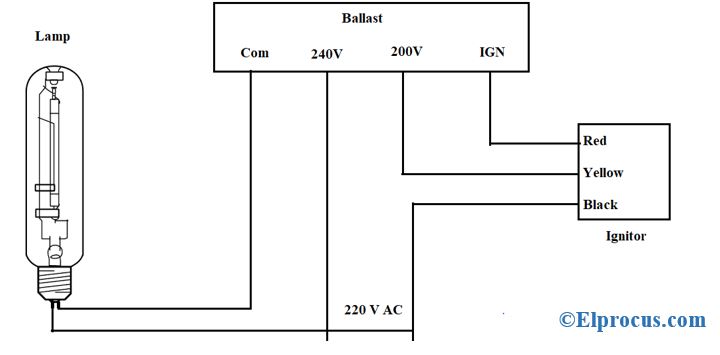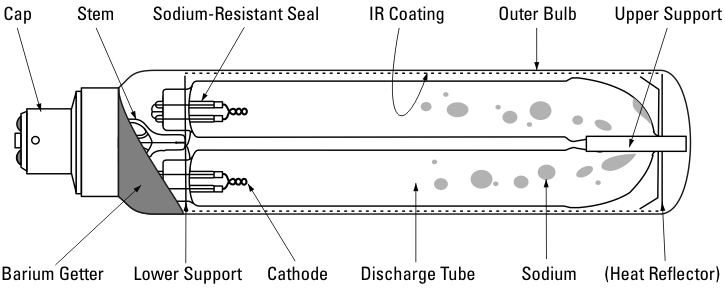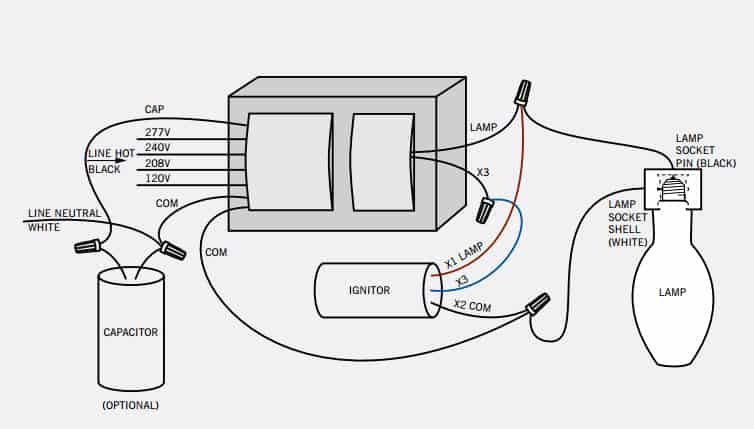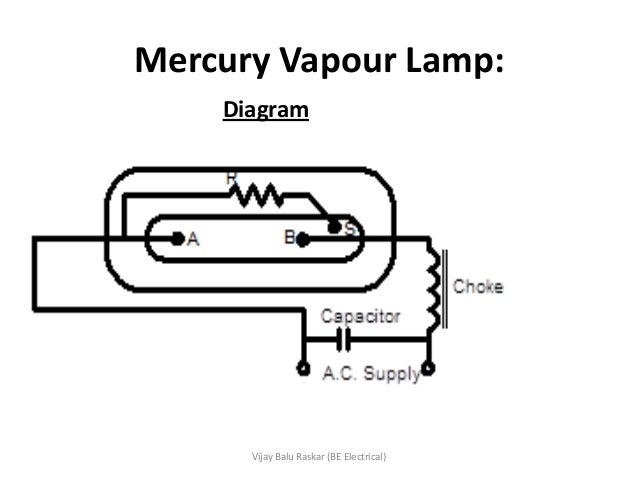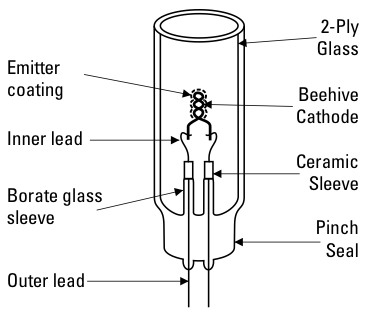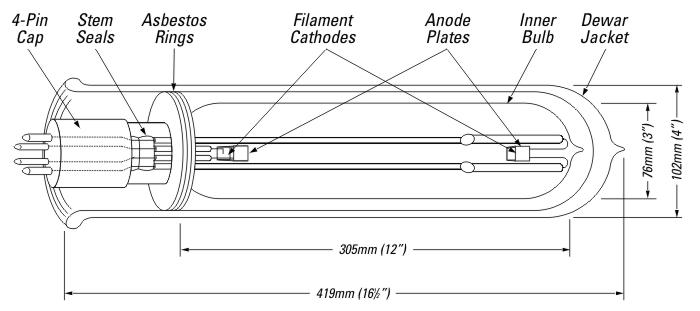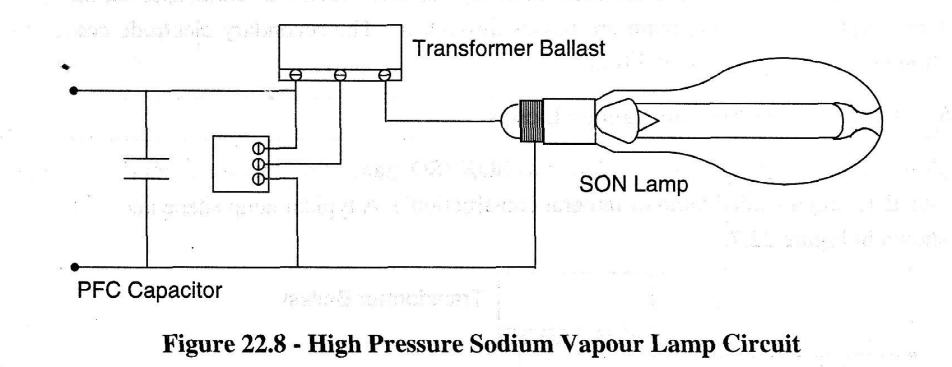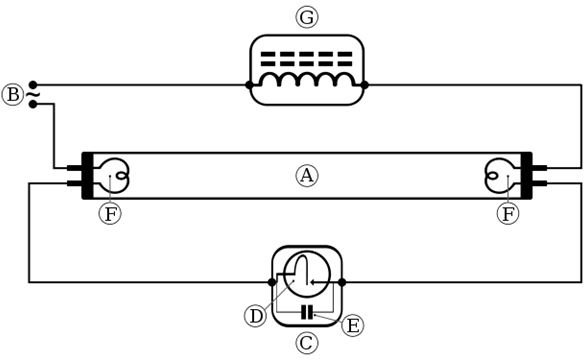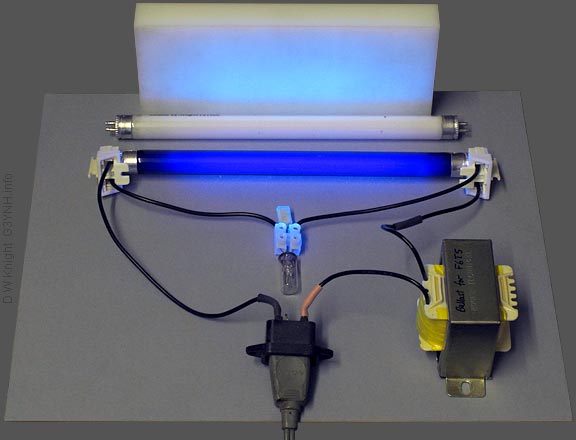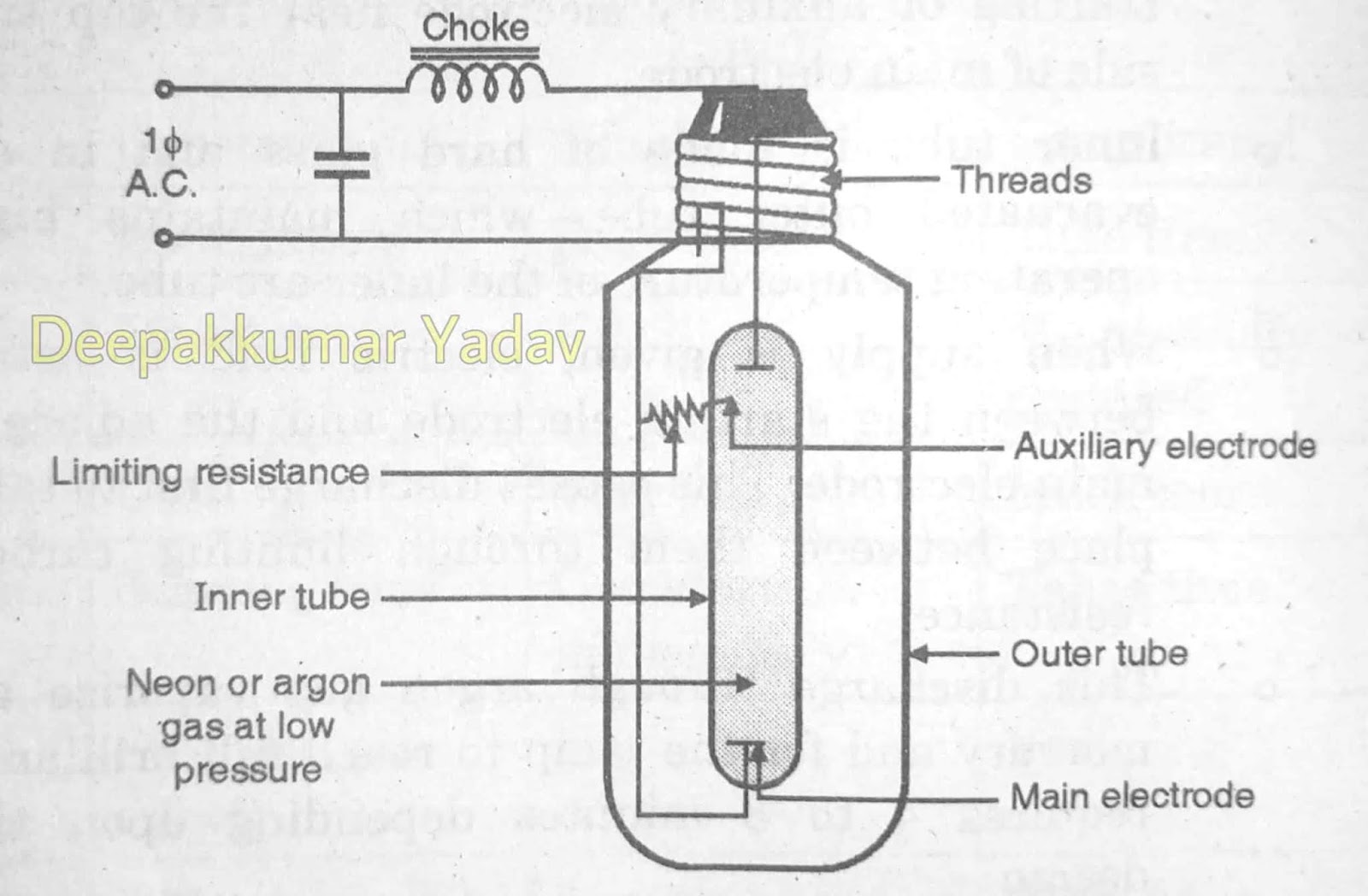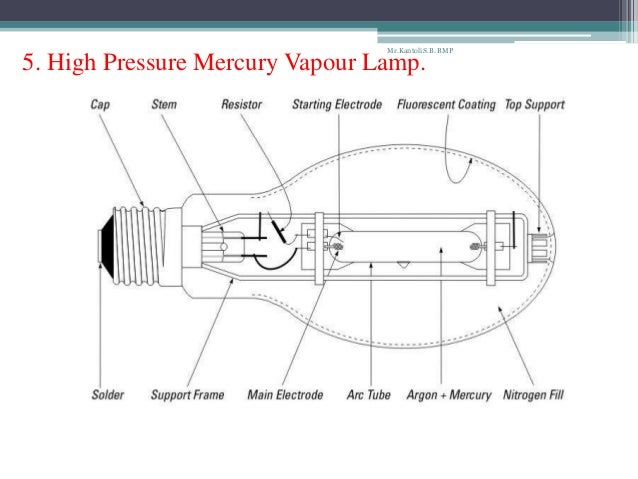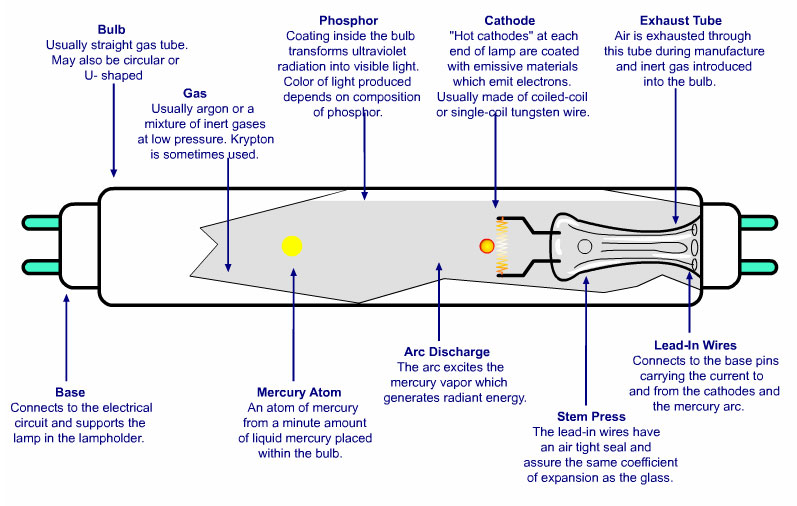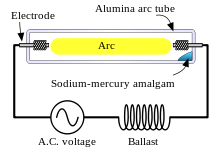An electric current in the gas energizes mercury vapor which delivers ultraviolet radiation through discharge process and the ultraviolet radiation causes the phosphor coating of the lamp inner wall to radiate visible light.
Low pressure mercury vapour lamp circuit diagram.
Rather than a cold spot the lamp s amalgam spot on pellet regulates mercury vapor pressure during operation and yields up to three times the uvc output of a standard low pressure mercury lamp of the same length.
Low pressure and high pressure low pressure sodium lamps are highly efficient electrical light sources but their yellow light restricts applications to outdoor lighting such as street lamps where they are widely used.
This coating covers more than 70 of the diameter of the lighted length of the lamp.
A sodium vapor lamp is a gas discharge lamp that uses sodium in an excited state to produce light at a characteristic wavelength near 589 nm.
As pressure increases the chance of multiple collisions gets increased.
Two varieties of such lamps exist.
The aperture phosphor coated lamps that jelight company produces employ the same basic design as the double bore low pressure mercury vapor lamps with the exception of a special phosphor coating.
A fluorescent lamp is a low weight mercury vapour lamp that uses fluorescence to deliver visible light.
Amalgam lamps use a mercury amalgam mix to control mercury vapor pressure.
When a mercury vapor lamp is first turned on it will produce a dark blue glow because only a small amount of the mercury is ionized and the gas pressure in the arc tube is very low so much of the light is produced in the ultraviolet mercury bands.



